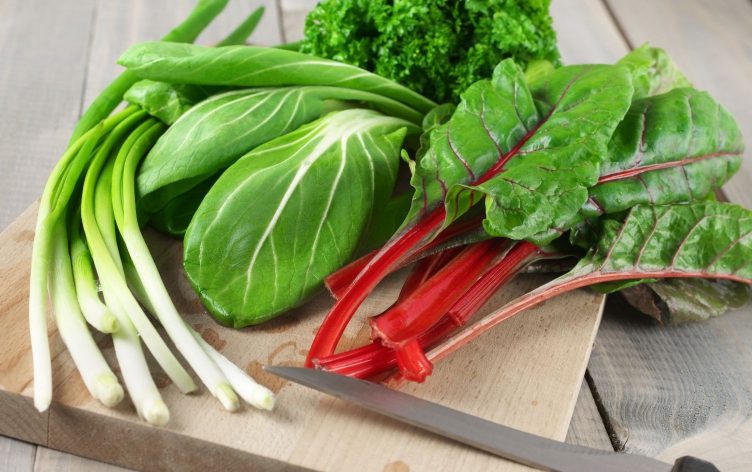
7 Green Veggies You Haven’t Tried, But Totally Should
You’ve probably heard you should eat the rainbow. But within the color spectrum, green veggies stand out as a superstar for their nutrition prowess. The thing is, there’s a lot to explore beyond the more typical spinach, lettuce, broccoli and Brussels sprouts. Ahead, dietitians share their favorite under-the-radar picks.
KOHLRABI
Also known as a German turnip, kohlrabi is a cruciferous vegetable similar to broccoli, kale and cabbage, but with a slightly sweeter taste, explains Lindsey DeSoto, a registered dietitian. “It’s very versatile and can be eaten raw or cooked.” Plus, it’s not too shabby in the nutrition department. “Kohlrabi is also chock-full of nutrients such as fiber, vitamin C and vitamin B6,” DeSoto adds. Add it to salads and soups, or saute it, she suggests.
“I personally like to roast mine in the oven. Start by removing any stems or leaves. Next, peel the skin on the kohlrabi bulb. Cut the kohlrabi into 1/2-inch slices, toss with olive oil and salt and pepper to taste, and roast at 425 degrees for around 20–25 minutes or until crisp.”
MUSTARD GREENS
Bitter greens don’t always get the spotlight, but they’re super nutritious according to Bill Bradley, a registered dietitian. “Mustard greens are a wonderful combo of bitter and mouth-watering flavor,” he explains. That means they don’t need a lot of extra flavor added when you cook them. “My favorite way to cook mustard greens is to saute them in extra virgin olive oil with garlic, and add a splash of balsamic vinegar at the end.”
As a bonus, one serving of mustard greens (a half-cup cooked) gives you half of your daily requirement for vitamin C, Bradley adds.
LACINATO KALE
“This is a darker version of kale with really dark green leaves filled with fiber, B-vitamins, vitamin A, and even vitamin C, says Dana Ellis Hunnes, a registered dietitian. Those qualities make it great for skin health, the immune system and digestion, Hunnes explains. Try it in a kale salad or a tasty pasta dish.
BEET GREENS
If you’re looking for ways to reduce your food waste, this one’s for you. “When I buy beets, I love to saute the greens separately,” notes Jinan Banna, a registered dietitian and professor of nutrition. “I use a little olive oil and garlic, and then top with lemon juice toward the end of cooking. These are very nutritious and are a source of vitamins A and K.”
SWISS CHARD
“This green veggie is less eaten than some others but may be more healthy,” says Morgyn Clair, a registered dietitian. “A serving of chard has over 100% of your daily vitamin A, and contains some enzymes thought to help with blood sugar control.” Saute it like you would any other green, or use it to make these chicken wraps.
CHICORY GREENS
“This bitter green has been foraged for thousands of years,” Bradley says. It’s not as common in the U.S., but you may find it at a farmers market or a specialty grocery store. “Chicory is high in vitamins K and C and is jam-packed with antioxidants,” he adds.
CHINESE BROCCOLI
Registered dietitian Lisa Hugh likes this veggie because it’s really easy to prepare. You can swap it in for bok choy in a stir fry, for example. “Chinese broccoli has a slightly bitter and enjoyable flavor and is rich in potassium, vitamins and minerals.”
THE BOTTOM LINE
There’s nothing wrong with the old classics, but when it comes to green vegetables, there’s a whole wide world of variety. If you’re trying to up your plant-food intake and you’re looking to try something new, one of these options might just become your new favorite veggie.
































